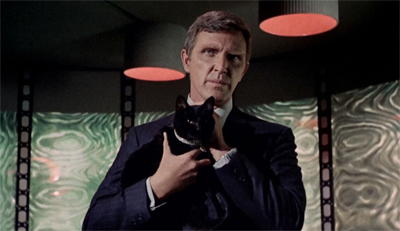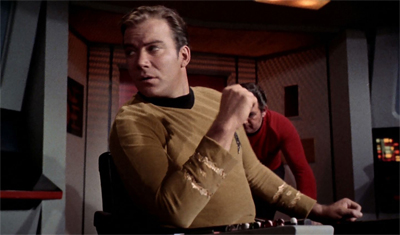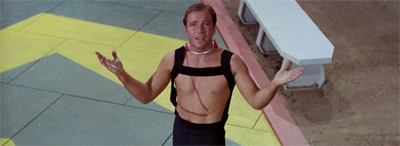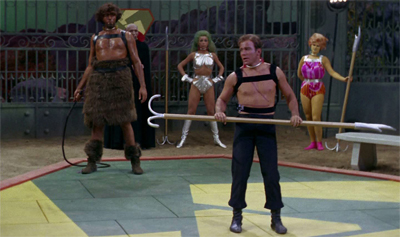This December, we’re taking a trip back in time to review the ninth season of The X-Files.
One of the surprising aspects of the ninth season is just how strong the episodes centring on Doggett and Reyes are.
True, there are not necessarily too many “all-time classic” episodes to be found across the length and breadth of the ninth season; that is arguably true of every season since the sixth. The strongest episodes of the ninth season tend to be those focusing on the two new lead characters actually doing their jobs and navigating the weird world around them. 4-D, John Doe, Hellbound and Audrey Pauley rank among the very best that the ninth season has to offer. The biggest problem with the ninth season is the difficulty that the show has maintaining that level of quality.

Into the void…
The ninth season never manages any real consistency. It never commits to one vision of the show or the other. While the stronger episodes suggest that The X-Files might be ready to move on past Mulder and Scully to embrace Doggett and Reyes, the show always returns to insisting that Mulder is still the most important character on the show despite David Duchnovny’s reluctance to return. Nothing Important Happened Today I featured David Duchovny’s stunt butt before Gillian Anderson, Robert Patrick or Annabeth Gish. That is the show’s priority.
This becomes particularly troublesome in the second half of the season. Steven Maeda seems to have a great deal of luck in his ninth season writing assignment, tackling episodes that wind up taking on a larger symbolic importance. 4-D was the first episode to be both produced and broadcast after the events of 9/11, due to scheduling choices that pushed Hellbound later into the season. Although Nothing Important Happened Today I was broadcast nearly two months after the attacks, the production team were actually working on Dæmonicus when news broke.

“Woops. Sorry. Wrong wall.”
Audrey Pauley winds up being the first episode to be produced and broadcast after the cancellation of The X-Files had been announced. The public had been informed of the cancellation between the broadcast of John Doe and Hellbound. The production team had found out while working on Scary Monsters. Due to scheduling choices, Scary Monsters had been pushed back later into the season and Audrey Pauley was aired first. Although it is quite likely Maeda was working on Audrey Pauley long before the cancellation, it still echoes through the work.
Audrey Pauley plays into some of Maeda’s core themes, suggesting alternate and pocket realities that navigate the void between life and death. As with 4-D, Audrey Pauley is very much a post-9/11 episode of The X-Files. However, it is also very much a post-cancellation episode of The X-Files.

Now, where have I seen this before?
Continue reading →
Filed under: The X-Files | Tagged: 9/11, cancellation, continuity, death, doggett, forgotten, limbo, reality, reyes, steven maeda, the x-files, undeath, x-files | 4 Comments »





































Star Trek – Bread and Circuses (Review)
The first Star Trek pilot, The Cage, was produced in 1964. To celebrate its fiftieth anniversary, this December we are reviewing the second season of the original Star Trek show. You can check out our first season reviews here. Check back daily for the latest review.
Bread and Circuses is not subtle. Then again, that is the point.
There’s a lot of interesting stuff happening in Bread and Circuses, the fourteenth episode produced for the second season, but the last to air. There’s the idea of a world dominated by “a twentieth century Rome”, a rogue captain, a Prime Directive dilemma and a scathing indictment of modern television. Not only is it one of the last episodes with a “produced by Gene L. Coon” credit, it is also an episode co-written by Roddenberry and Coon. It is also the episode of Star Trek that endorses Christianity most explicitly and heavily.
“Wait, we’re only getting it in black and white?”
Bread and Circuses is a bold and audacious piece of television, full of venom and righteous anger, rich in satire and cynicism. It’s a plot so ridiculously over-stuffed with good ideas that viewers are liable to forgive the show’s somewhat cop-out ending where Kirk and his away team beam back to the Enterprise and continue on their merry way as though little has actually happened. Bread and Circuses feels like it uses every minute of its fifty-minute runtime wisely, balancing character with world-building.
It is probably a little bit too messy and disjointed to be labelled a dyed-in-the-wool classic, particularly when compared to the shows produced around it. Nevertheless, it is a decidedly ambitious piece of work, and one that demonstrates what Star Trek could do when it sets its mind to something.
When in Rome…
Continue reading →
Filed under: The Original Series | Tagged: behind the scenes, cancellation, capitalism, Christ, christianity, competition, culture, faith, fans, fourth wall, game shows, Gene L. Coon, gene roddenberry, kirk, McCoy, ralph senensky, reality television, religion, romans, romulans, science fiction, Shatner, social commentary, space!romans, spock, star trek, star trek: the original series, Television, the all, the original series, tos | 6 Comments »